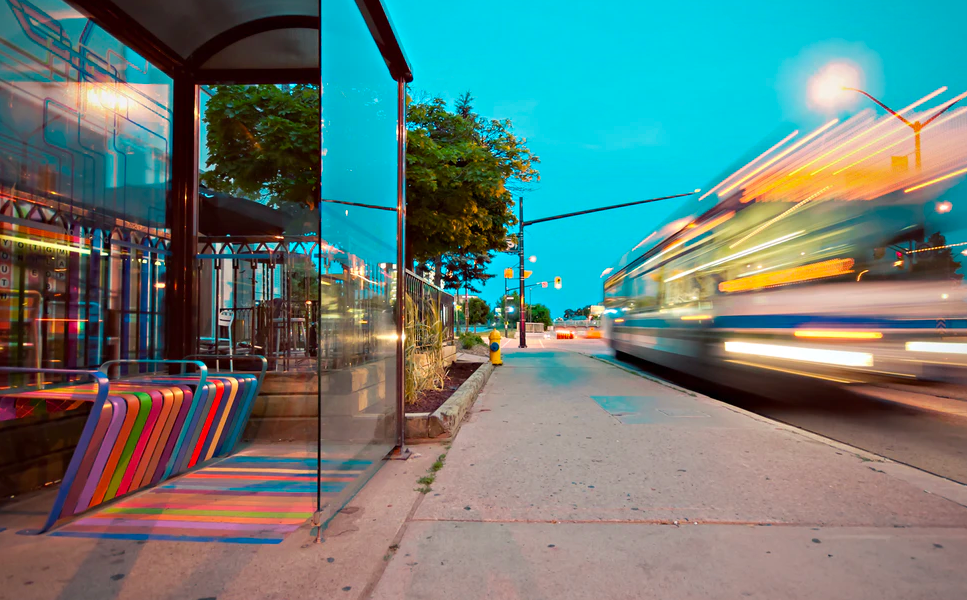Micromobility & Social Equity
How might we design more inclusive Light Electric Vehicle form factors and micromobility solutions for both passenger mobility and goods delivery?

The challenge
Micromobilty is a category of modes of transport that includes very light vehicles such as electric scooters or shared bicycles. Micromobility has become an increasingly popular solution to the “last mile” of personal transportation because it is convenient, fast and cool. Despite the excitement surrounding micromobility, current micromobility deployments often do not benefit all citizens. With regards to the vehicle design, scooters today can be dangerous, only suitable for single passengers with no load. On the contrary, cars offer a convenient and reliable alternative for people who need to fulfill other needs, such as transporting kids or groceries. Cities are filled to the brim with cars, and streets in most cities can’t take much more congestion. In addition, because car trips are typically short (60 percent of all trips in the United States are five miles or less) there is undeniable potential for smaller-than-car transportation options.
Moreover, the current micromobility system is failing low-income communities. Studies reveal that micromobility in most cities is not very inclusive¹. Most users of micromobility solutions tend to be younger, upper income, single and male. Low-income households are often left with few reliable or affordable mobility options. Investments in transportation systems often leave many behind in cities, older suburbs, and small towns. A mobility system should provide everyone—regardless of age, income, race or disability—with viable mobility choices. We believe we can find a middle ground between a scooter and a car that can accommodate the needs of more people including parents, kids, aging people, low-income communities and people with disabilities.
The opportunity
The time is ripe for an explosion of different form factors, business models, and software solutions in electric mobility. The form factor refers to the hardware design aspect that defines and prescribes the size, shape, and other physical specifications of components. We’ve seen a rise of electric cargo bikes for package delivery, large autonomous vehicles for pizza delivery, drones for Amazon Prime and SF Express. We’ve seen scooters, skateboards, hoverboards, smart cars for personal transport. We’ve seen Uber, Lyft and Didi transform the ride-hailing industry. We’ve seen new autonomous shuttles from the autonomous vehicle operators as well as incumbent OEMs.
Now it’s your turn. How will you tackle the micromobility & social equity challenge and be a part of the solution? We challenge you to design a novel form factor, business model or solutions that enable a wider variety of people to access efficient mobility. Feel free to explore vehicles for passenger transport, ride-hailing fleets/autonomous vehicles, and delivery vehicles.
Focus areas
We suggest the following themes to help spark your ideas. You’re welcome to go beyond these areas and combine them to drive impact for our challenge.
Mobility & Form factors
We are looking for new form factors to expand the scope of micromobility from just scooters. Can we find a middle ground between a scooter and a car that is actually an even better alternative to the existing solutions?
Mobility & People
A mobility system should provide everyone—regardless of age, income, race or disability—with viable mobility choices. How might we leverage micromobility to serve the communities that most need accessible, affordable and interconnected mobility choices that are both healthy for the environment and for people?
Mobility & Goods
The micromobility solutions we know today are ill-equipped to grocery bags or other deliveries. How might we design Light Electric Vehicles that move people as well as goods?
Mobility & COVID-19
Your idea can be a response to the COVID-19 crisis. In times of the Coronavirus, many people can not or should not leave their homes anymore, relying on the help of others. How can we ensure food and medicine gets to vulnerable populations during the crisis? How can we mobilize first responders and healthcare staff in a fast and safe way? How can we help people through the COVID-19 pandemic with micromobility? A crisis presents an opportunity to rethink the systems we inhabit. How can we create a sustainable and resilient mobility future beyond the COVID-19 crisis?
Collaboration Incentive
We invite the most motivated and talented participants for a behind the scenes tour of our EDF Innovation Lab. In a workshop, we want to explore how we can collaborate to implement and test your ideas.
About the EDF Innovation Lab
At the EDF Innovation Lab, we aim to electrify the future. As an energy utility company, we want to contribute to the micromobility ecosystem and foster decentralized, data-driven and low-carbon energy solutions.
Resources
Join our slack channel to get inspiring resources.
¹ For an overview of these studies, read Cities Need To Rethink Micromobility To Ensure It Works For All

